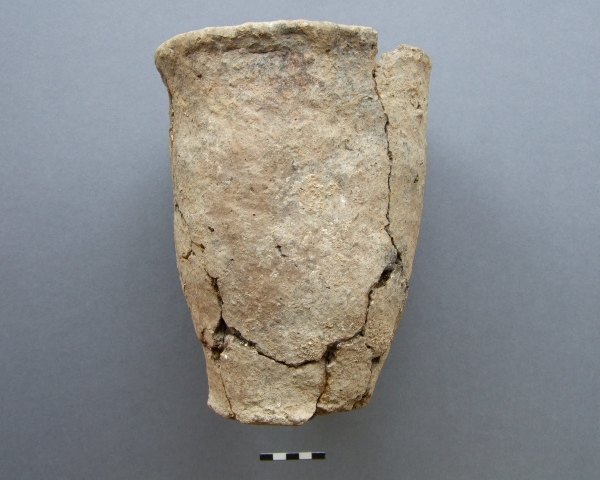
VM_365 Day 212 Early Bronze Age Urn Conundrum


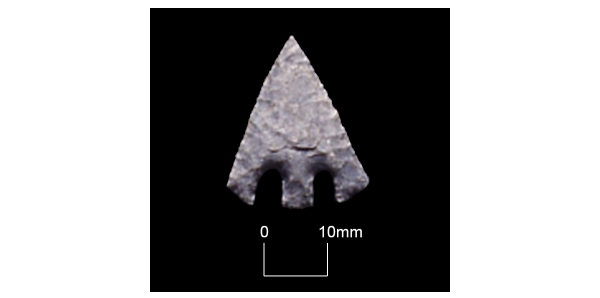
The image for Day 210 of the VM_365 project is another taken from our slide archive.
The object shown is a Late Neolithic flint tanged and barbed arrowhead, found in the fill of a segment excavated through an enclosure at Laundry Road, Minster in 1995. Another ditch section contained pottery dating to the Beaker period, suggesting that the whole enclosure was of late Neolithic/Early Bronze Age date.
Other similar flint arrowheads from locations in Thanet have been featured in previous VM_365 posts, on Day 141, Day 162, and Day 168.
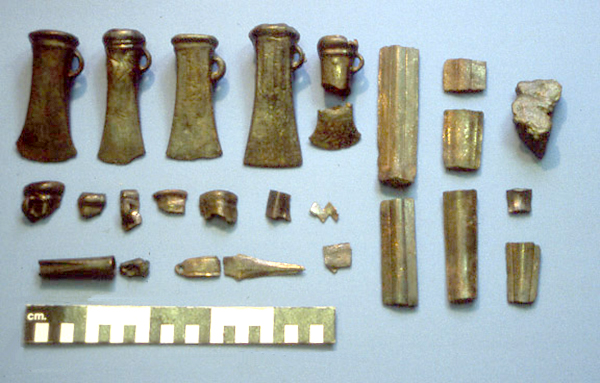
Today’s VM_365 image for Day 205 is of a Late Bronze Age Bronze Hoard given the name Birchington III to distinguish it from other hoards. The bronzes were found by a metal detectorist near Quex Park, Birchington in 1996.
The objects include socketed axes; blade, collar and body fragments from socketed axes; fragments of blades from swords in the Ewart Park Anglo-Welsh tradition; a blade fragment from a point of a sword in the Continental Carp’s Tongue tradition; other sword blade fragments; parts of a small knife as well as part of the blade of a socketed chisel and finally, a bun ingot.
The hoard contains a large quantity of material from the continent, probably brought in as scrap as part of cross Channel trading and presumably intended to be melted down and reused as were many of the Bronze hoards found on Thanet.
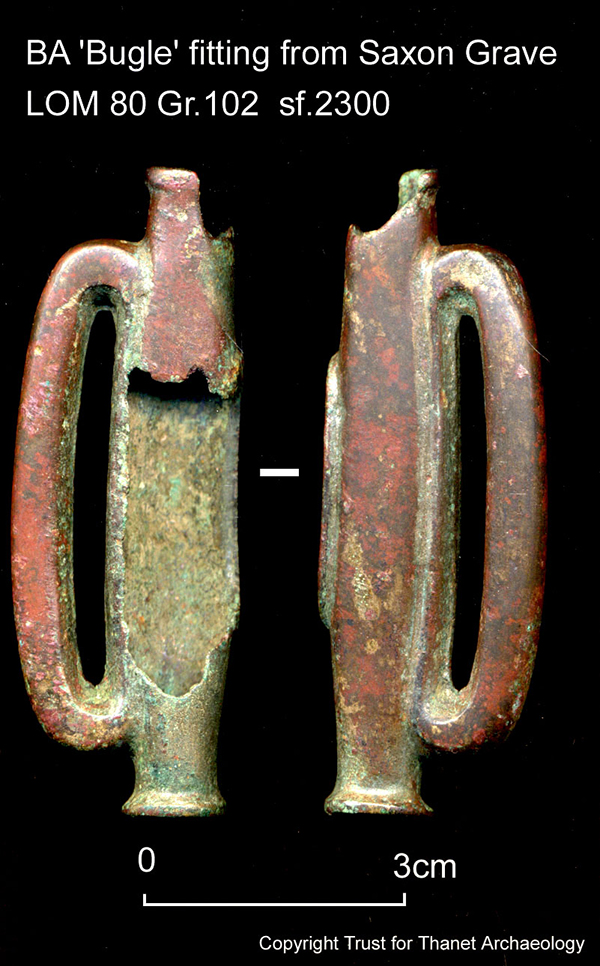
Today’s VM_365 image shows a Bronze Age ‘Bugle’ fitting that was found within an Anglo-Saxon grave at Lord of the Manor, Ramsgate in 1980.
The ‘Bugle’ fitting is named after its similarity in shape to a bugle. This particular example is a cast copper alloy tubular fitting with a hollow body and an opening on the non loop side and at either end. Fittings such as these are attributed to the Late Bronze Age and are thought to form part of a harness or part of its equipment. The most likely use for this object would be for the fastening of a leather strap although its exact function is unknown. Other suggestions for its use have included a dog whistle used in rounding up livestock.
How did it come to be in a grave over a thousand years later? It seems that at all times in history objects from the past have been seen to be interesting enough to be collected and curated as curiosities. This object may have been prized by the occupant of the grave, or have been placed there by a family member as a talisman. Alternatively it may have come to be in the grave by sheer coincidence from the soil backfilled within it.
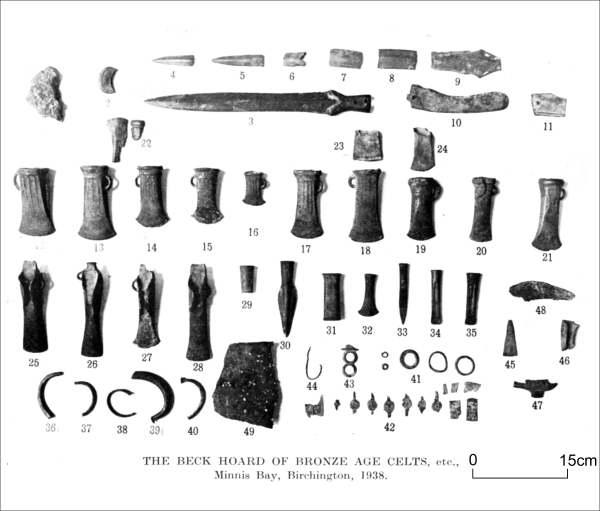
Today’s image for Day 202 of the VM_365 project is of the bronze objects, pottery and other artefacts in what has become known as the Beck Hoard.
In 1938 a boy called James Beck noticed some dark patches on the flat wave cut platform on the beach beyond the cliffs at Minnis Bay, Birchington. With the assistance of Antoinette-Powell Cotton who lived nearby at Quex Park, James excavated and recorded several of the pits and the finds within them.
In one of the pits the large bronze hoard shown today’s image was recovered, along with some large sherds of pottery. The hoard contained swords, palstave and socketed axes, spear heads along with smaller bronze objects, ingots and fittings. The details of the Beck hoard were published in Archaeologia Cantiana by G.F. Pinfold, curator of the Powell-Cotton Museum and Major Percy Powell-Cotton.
The pits were once much deeper, having been cut from a land surface that stood at a higher elevation, which had been truncated by wave action to the level of the eroded platform that lies at the base of the present cliff line.
The Beck hoard is one of several that have been found on the present coastline of the north side of Thanet, the earliest discovery being the Mutrix Farm hoard which was shown in VM_365 Day 81. Rapid erosion of the soft deposits along this coastline is eating its way into the valleys and hill tops that would have been some distance from the sea in the Bronze Age landscape.
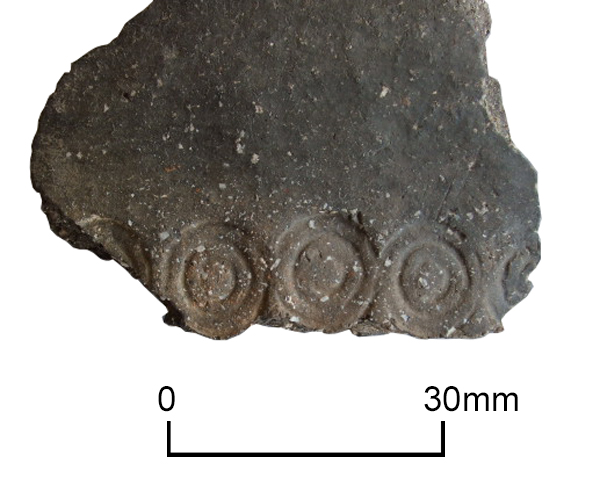
Today’s image is of a decorative motif on a piece of pottery from the transitional period between the Middle and later Bronze Age.
The sherd from a vessel closely related to the one shown in Day 199, which contained the Birchington Bronze Hoard. Close inspection of the globular bowl from Birchington shows that it was decorated with a horizontal row of stamped rings, following the centre line of the body.
The sherd shown in the VM_365 image today is from another similar flint and grog tempered vessel, this time from Margate. The Margate pot is also likely to have been decorated with a single row of stamps from an object carved with a series of raised concentric circles. The stamping was added after the outer skin of the pot had been burnished to a smooth finish. On the current evidence – including the dating of the hoard from within the Birchington bowl the date of the vessel the sherd came from and other pots like this should be placed between c.1350-1150 BC.
Like much of the decoration applied to Bronze Age pottery, the ring pattern is thought to be skeuomorphic, each of the stamped rings emulating the rivets that would have joined two sections of a bronze bowl into a globular shape.
A bronze cauldron that was found at Shipton on Cherwell in Oxfordshire which is now in the Ashmolean Museum, gives an idea of the riveting patterns on bronze vessels that may have inspired the ring stamp motif on the pots from Birchington and Margate.
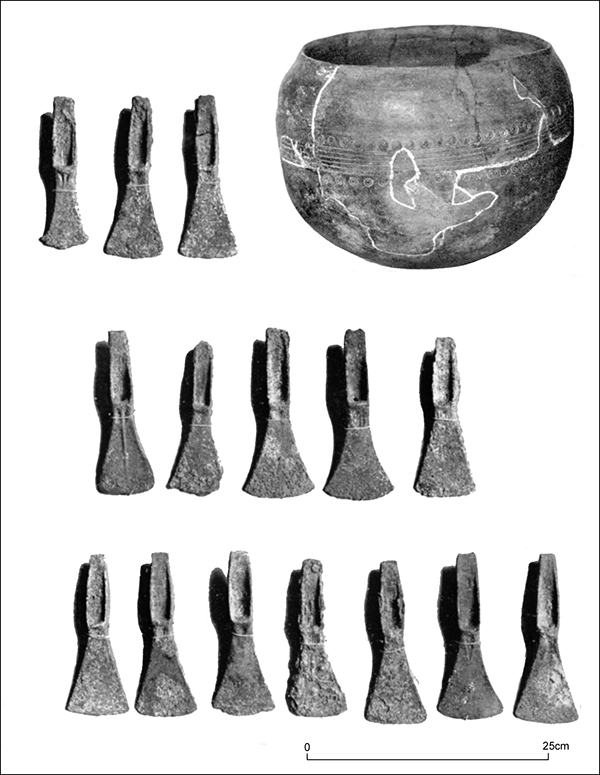
After Powell-Cotton et al 1924.
The image for Day 199 of the VM_365 project shows a Middle Bronze Age Bronze Hoard found in 1904 during brickearth extraction at Birchington.
The hoard comprised 14 palstave axes found in a globular fineware bowl of Deverel Rimbury type. Deposition within a pottery vessel is unusual and few other similar examples exist.
The vessel, which had been broken and the lower parts of which were missing, was stamped with two bands of concentric impressed rings above and below a band of scored horizontal lines. The vessel was restored in 1923.
References
Powell-Cotton, P. H. G. and Crawford, O. G. S. 1924. The Birchington Hoard. The Antiquaries Journal 4, 220-226.
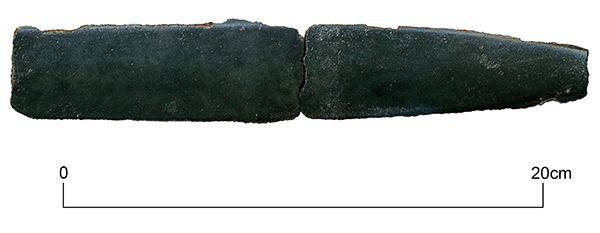
Today’s image for Day 197 of the VM_365 project shows two fragments from a sword blade found as part of a Late Bronze Age Bronze Hoard at Manston in 1994.
These two joining fragments of a leaf-shaped sword blade were found along with the narrow -bladed palstave axe and pegged spearhead shown in previous VM_365 posts. Traces of the ground edge of the sword can just be seen on both fragments.
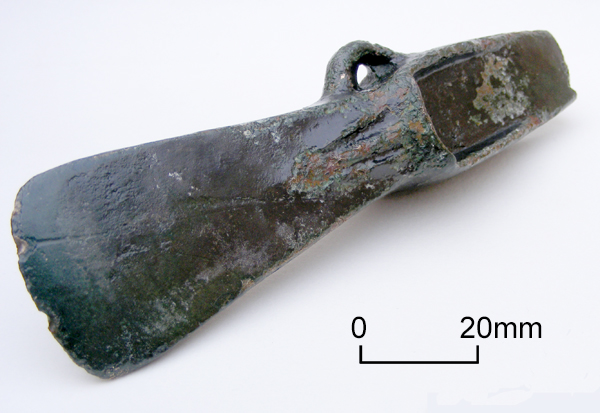
The image for Day 196 is another of the bronze objects found in a late Bronze Age hoard at Manston, the same group of objects as the pegged spear head shown in Day 194.
The axe has both a slot to fit a wooden haft and a loop that could be used to secure the axe head to the haft with some form of binding.
Axes and other objects like those in the group were cast in two part moulds and often the join between the two sections of the mould can be seen as a fine extrusion line along the central axis of the object. The casting may also include ornamental patterning or ribbing as can be seen in this example.
The ability to manipulate the production of bronze and cast it into objects like these has been seen as a skill that gave power and mystique to the bronze workers in Bronze Age society.
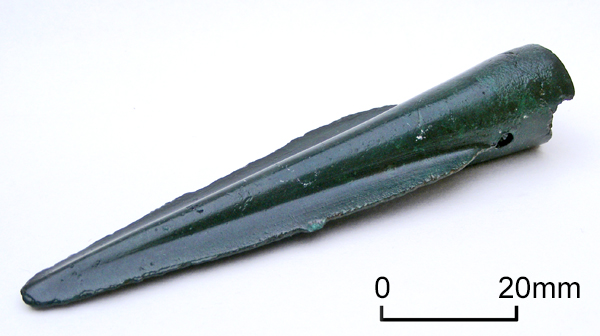
The image for VM_365 Day 194 is of a Late Bronze Age pegged spear head, dating to the period 1150 – 600 BC.
This type of spear head is found in a region spanning the Thames Valley, Cambridge Fens and the east Midlands and of course in East Kent. These pegged spearheads have considerable variation in dimension and detail and can be anything from 10 to 40cm in length.
The leaf shaped blade extends from a circular central shaft, which is hollow socket at the top end, where the spear shaft would have been fitted, secured with a pin through the holes on opposite sides of the shaft. The blade in this example is slightly worn around the edges from corrosion.
This example was found with other tools and pieces of scrap bronze in a group at a site at Manston. The slightly glossy appearance to the surface is caused by a conservation treatment applied to prevent any further corrosion.